The ocean, covering more than 70% of the Earth’s surface, is home to a dazzling array of life forms. Among the most fascinating aspects of marine biology is the mating behavior of ocean species. These rituals are as diverse as the creatures themselves, shaped by millions of years of evolution to ensure the survival of each species. This comprehensive exploration delves into the mating rituals of various ocean inhabitants, from the tiniest invertebrates to the largest mammals, uncovering the intricate and often astonishing strategies they employ.
Overview of Mating Rituals in Marine Life
Definition and Importance
Mating rituals in marine life encompass a wide array of behaviors and actions designed to attract a mate, reproduce, and ensure the continuation of the species. These rituals are essential as they increase the likelihood of successful reproduction, ensuring that the next generation is healthy and numerous.
Factors Influencing Mating
Environmental and biological factors heavily influence these mating behaviors. Seasonal changes, for instance, play a pivotal role. Many species time their mating rituals with specific seasons when conditions are most favorable for their offspring. Habitat also dictates how and when these rituals occur. For example, coral reefs provide a complex environment that demands intricate mating dances, while the open ocean may require long-distance calls and signals.
Unique Mating Rituals of Specific Ocean Species
Seahorses (genus Hippocampus)

Seahorses are perhaps the most well-known for their distinctive courtship dance. Every morning, these tiny creatures engage in a ritual that involves mirroring each other’s movements, changing colors, and intertwining tails. They are unique among fish for their unusual reproductive strategy. In a rare example of male pregnancy, female seahorses deposit their eggs into a specialized brood pouch on the male’s abdomen. The male then fertilizes the eggs internally and carries them until they hatch, providing protection and oxygen through the pouch walls. Seahorses are also known for their monogamous pair bonds, often engaging in daily courtship rituals that strengthen their bond, such as intertwining tails and changing colors.
Anglerfish
Anglerfish mating rituals are as bizarre as the fish themselves. In these deep-sea creatures, the tiny male permanently attaches himself to the female, becoming a parasite. Over time, their bodies fuse, and the male’s organs degenerate, leaving only the testes to supply sperm when the female is ready to reproduce. This unusual method ensures that the male is always available when conditions are right for fertilization.

Mating Rituals of Blue Whales: Songs and Migration
Whales are among the largest and most charismatic marine animals, with mating rituals that can span vast distances and involve elaborate vocalizations. For instance, Humpback whales (Megaptera novaeangliae) are famous for their complex songs, which males use to attract females and establish dominance. These songs can last for hours and be heard over great distances. Humpback whales also engage in long migrations between feeding and breeding grounds, with males often competing for females through displays of strength and agility, such as breaching and tail-slapping.
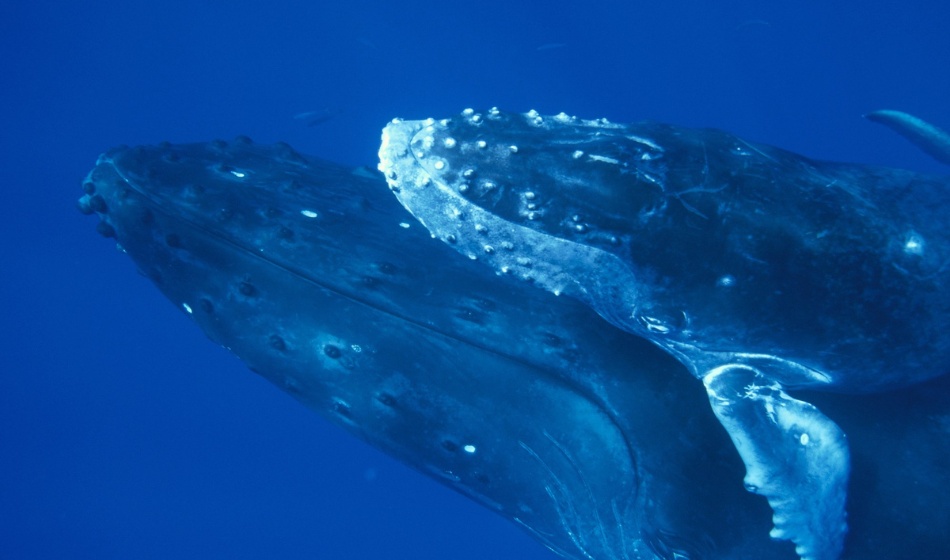
Dolphins: Social Bonds and Cooperation
Dolphins, particularly bottlenose dolphins (Tursiops truncatus), are highly social and intelligent animals with intricate mating behaviors. They live in fluid social groups and form strong bonds with one another. Mating can involve cooperative behaviors, where groups of males, called alliances, work together to court and mate with females. These alliances can last for years and are based on mutual cooperation and trust. Dolphins also use a variety of vocalizations and physical displays during courtship, including leaping, chasing, and synchronized swimming.
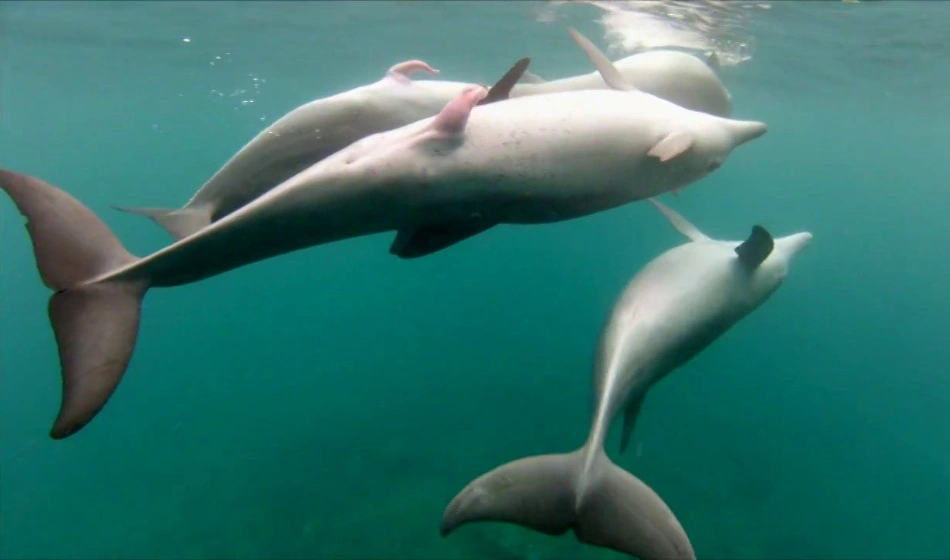
Octopuses: Camouflage and Courtship
Octopuses are solitary and often reclusive creatures, but they engage in complex and intriguing behaviors during mating season. Male octopuses use a specialized arm called a hectocotylus to transfer spermatophores (packets of sperm) to the female. To approach a potential mate, males may use their ability to change color and texture to signal their intentions and avoid appearing threatening. Some species, like the mimic octopus (Thaumoctopus mimics), even impersonate females or other species to get closer to a mate or avoid competition.
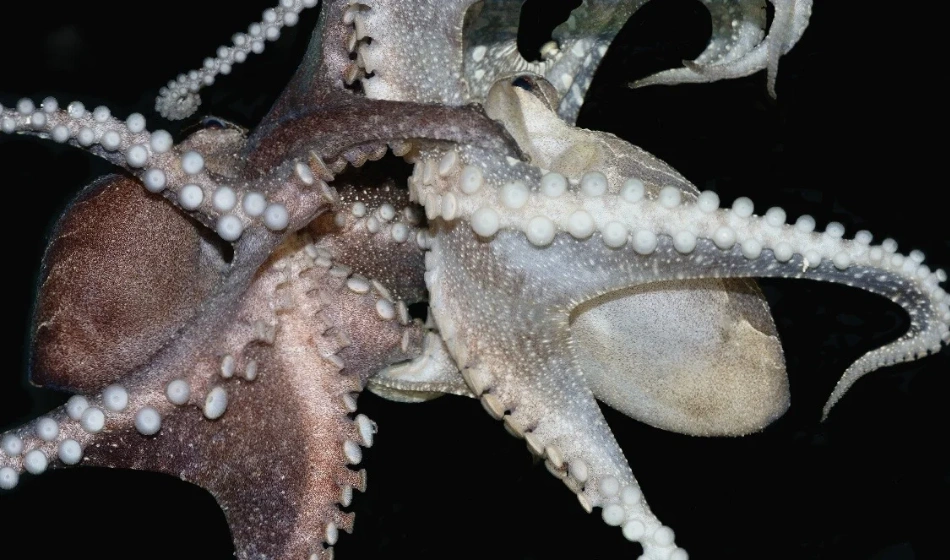
Coral Reef Fish: A Dance of Colors
Coral reefs are bustling underwater metropolises where fish of all shapes and sizes interact. Many reef fish engage in colorful and elaborate mating displays to attract mates. For instance, the mandarin fish (Synchiropus splendidus) is known for its vibrant colors and intricate courtship dances. During mating, a male mandarin fish will dance, swimming in circles and displaying its vivid patterns to entice a female. This display culminates in a synchronized rise into the water column, where the pair releases their gametes.
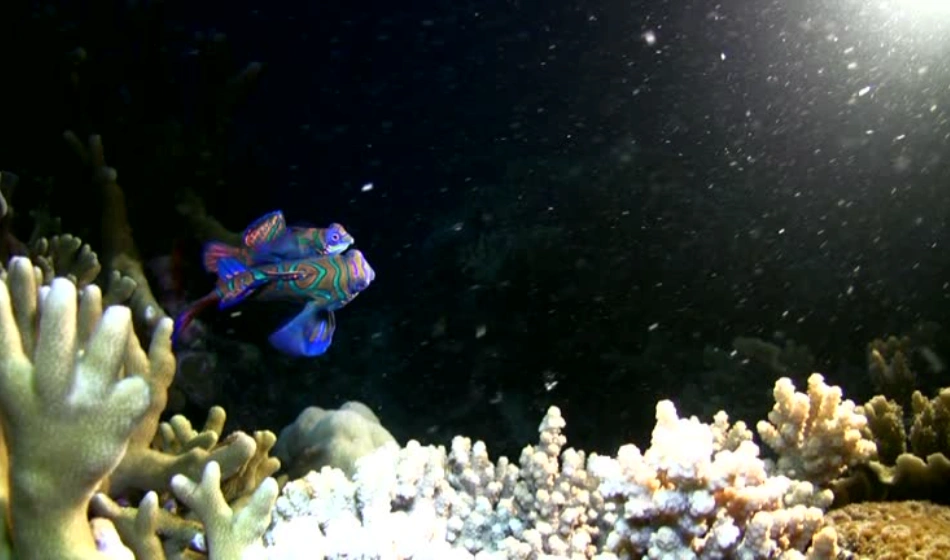
Cichlids: Parental Care and Territory Defense
Cichlids (family Cichlidae), particularly those from the African Great Lakes, exhibit fascinating mating and parental behaviors. Many cichlids are known for their intense territoriality and elaborate courtship displays. Male cichlids often create and defend nests, which can be simple depressions in the sand or more elaborate structures. The courtship process involves the male displaying vibrant colors and performing specific movements to attract a female. Once the female lays her eggs, the male fertilizes them, and both parents may take part in guarding and tending the offspring, ensuring higher survival rates in their competitive environments.
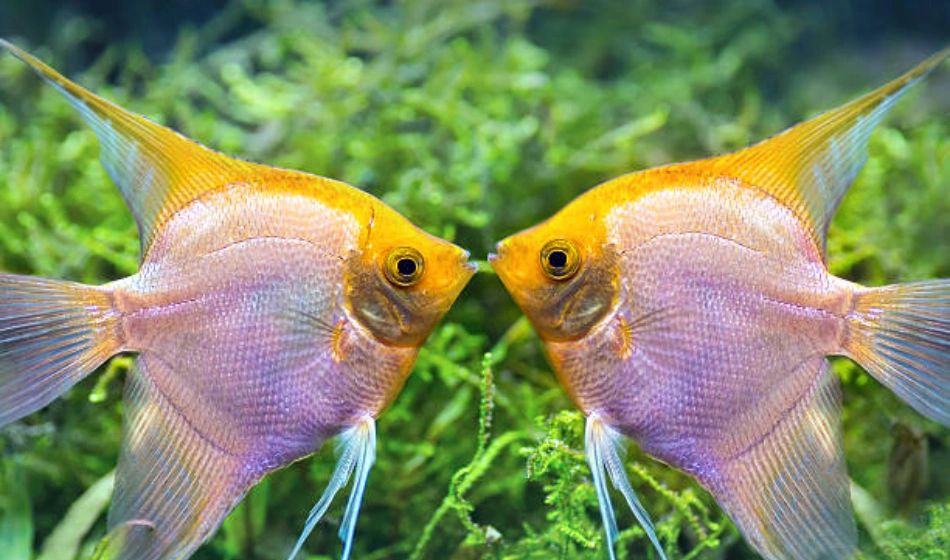
Crabs: Claws and Signals
Crabs, particularly fiddler crabs (genus Uca), are known for their distinctive mating displays. Male fiddler crabs use their oversized claw to attract females and ward off rivals. The male waves his claw in a rhythmic pattern, which can vary between species, to signal his presence and fitness to potential mates. This display is often accompanied by building a burrow, which the female inspects before mating. If the female is impressed, she will enter the burrow, and mating will occur. The male’s claw-waving display is not only a courtship ritual but also a territorial signal, indicating the quality of his burrow and overall fitness.
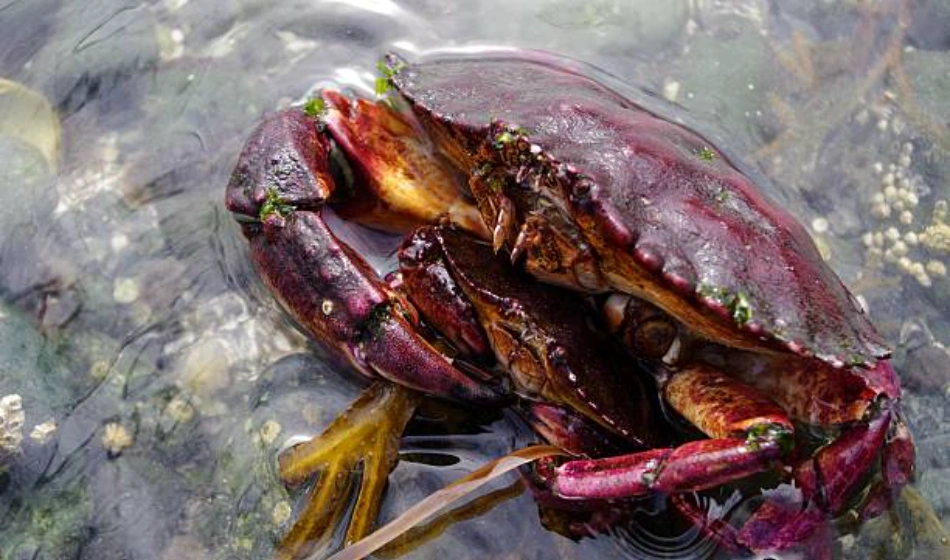
Seals and Sea Lions: Harems and Vocal Duels
Seals and sea lions exhibit a range of mating systems, from monogamy to polygyny. Elephant seals (Mirounga spp.), for instance, have a polygynous mating system where dominant males, known as beachmasters, establish harems of females. These males engage in fierce vocal and physical battles to defend their harems from rival males. The vocalizations of elephant seals can be heard from great distances and play a crucial role in establishing dominance and deterring challengers. Female elephant seals give birth and mate again shortly after weaning their pups, ensuring a continuous cycle of reproduction.
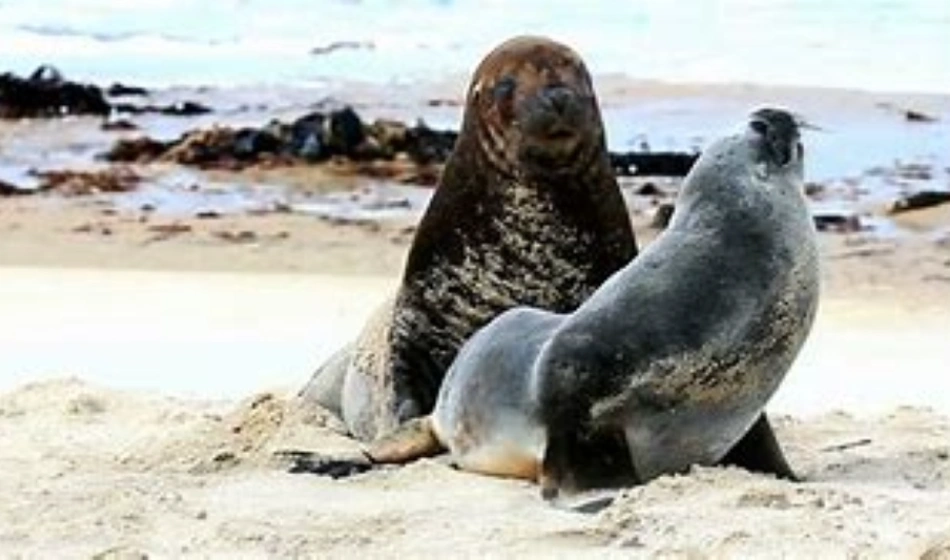
Lobsters: Chemical Signals and Molting
Lobsters, such as the American lobster (Homarus americanus), have complex mating rituals that involve chemical communication and timing. Female lobsters release pheromones into the water to signal their readiness to mate. When a male detects these chemical cues, he approaches the female and performs a series of behaviors to establish dominance and court her. Lobster mating often occurs after the female has molted and is in a soft-shell state, making her more vulnerable. The male protects the female during this time, and after mating, he continues to guard her until her shell hardens. This courtship and protective behavior ensures the successful fertilization and survival of the female and her offspring.
Conclusion: Mating Rituals of Specific Ocean Species
The mating rituals of ocean species are a testament to the complexity and beauty of marine life. These behaviors, honed by millions of years of evolution, are vital for the survival of species and the health of marine ecosystems. However, human activities pose significant threats to these intricate reproductive strategies, challenging the resilience of ocean species and their habitats.
Protecting the mating rituals of marine species requires a collective effort from governments, scientists, conservation organizations, and the public. Through the establishment of Marine Protected Areas, the promotion of sustainable fishing practices, pollution control, habitat restoration, and the advancement of research and technology, we can mitigate the impacts of human activities and ensure the long-term survival of marine life.
Ultimately, preserving the reproductive success of ocean species is not only a matter of ecological importance but also a moral imperative. The health of our oceans is intrinsically linked to the well-being of our planet and future generations. By understanding and protecting the delicate dance of marine reproduction, we contribute to the resilience and richness of life beneath the waves, ensuring a thriving ocean for generations to come.
